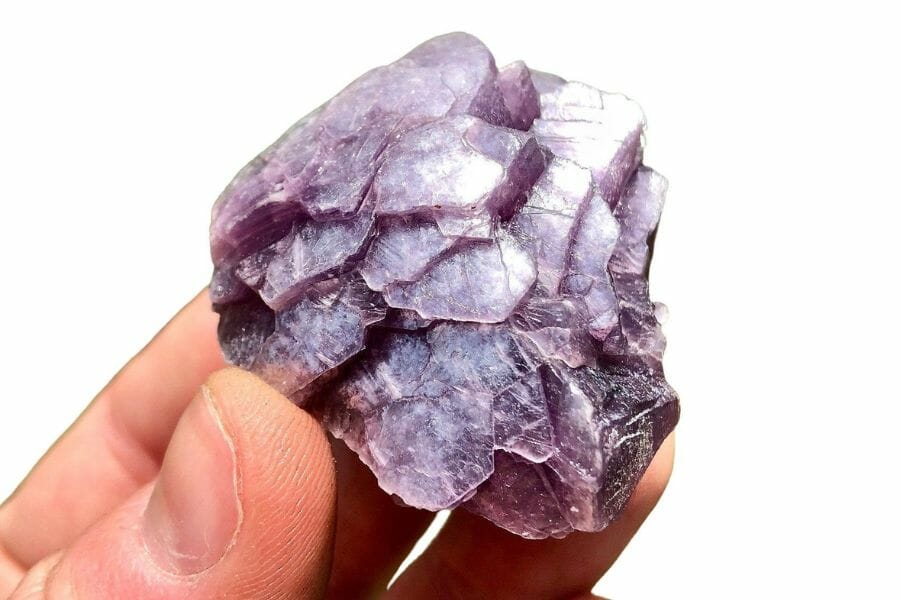Finding crystals can be a rewarding adventure, offering a unique way to explore the natural beauty and geology of the region. Whether you’re a seasoned rockhound or just getting started, knowing where to look is key to uncovering these hidden treasures.
In this state, a variety of locations provide opportunities to discover different types of crystals. From rocky outcrops in the mountains to stream beds that carry sparkling surprises, each area offers its own unique finds for those willing to search.
We can help you get started with some places you can explore for crystals below!
Crystals you can find in the US
The United States offers a wide range of crystals that reflect its diverse geology. From vibrant gems to more subtle mineral formations, there’s something to discover in nearly every region.
Calcite
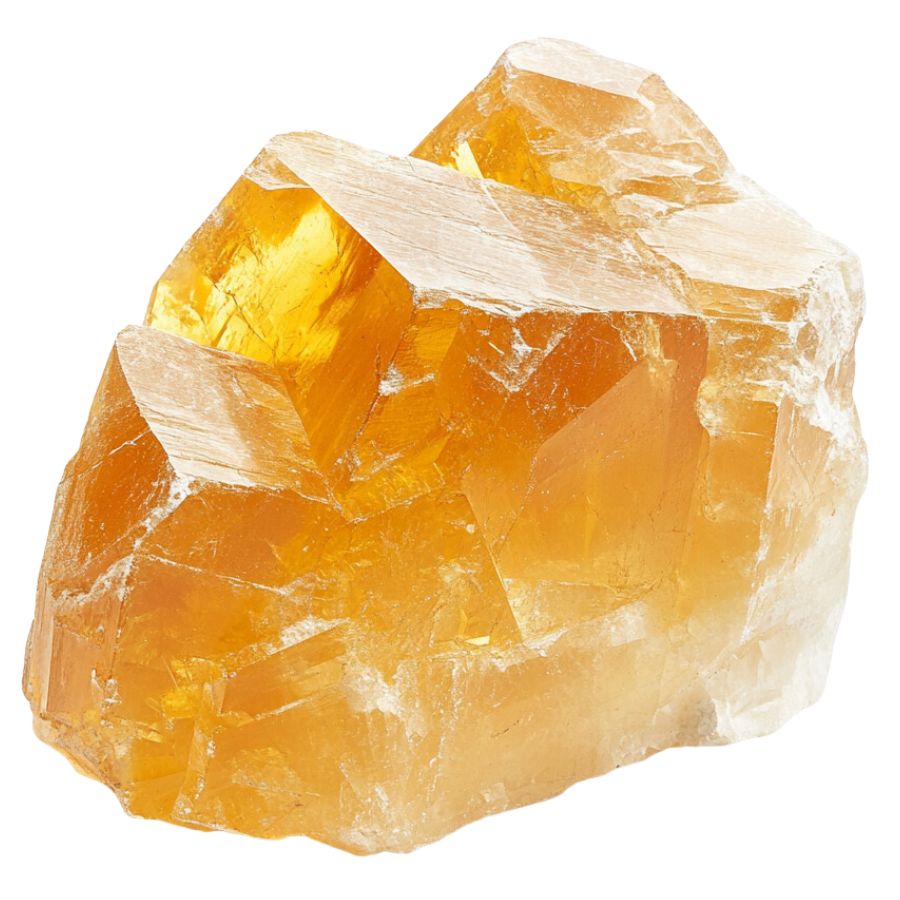
With a variety of forms and a unique property of double refraction, calcite allows objects viewed through the crystal to appear doubled. This mineral can appear in a spectrum of colors, with pure forms typically being transparent or white.
In addition, calcite reacts vigorously with acids, which aids in distinguishing it from other minerals. It also frequently contributes to the structure of sedimentary rocks such as limestone.
Gypsum
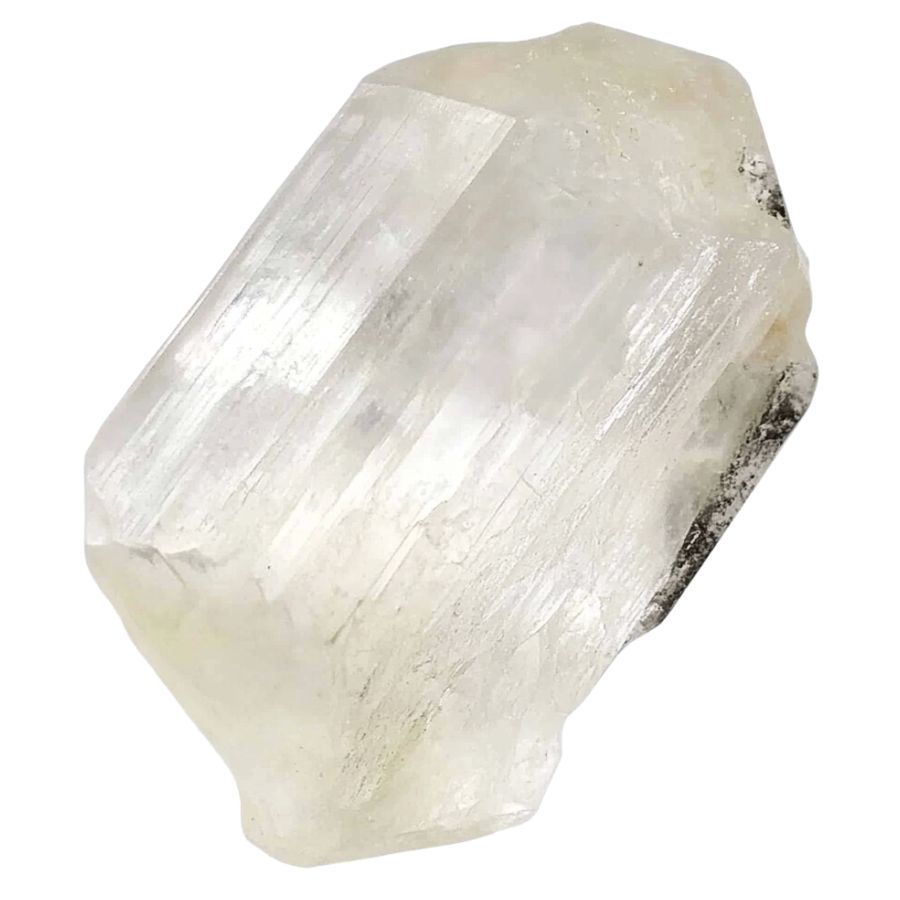
Gypsum’s notable softness allows it to be easily scratched with just a fingernail, often presenting as white or very light-colored in its pure form.
It manifests in both crystalline forms, like selenite, and massive forms such as alabaster, making it versatile in use and appearance.
Gypsum is also essential in the construction industry and is a key component in the manufacture of plaster and drywall.
Fluorite
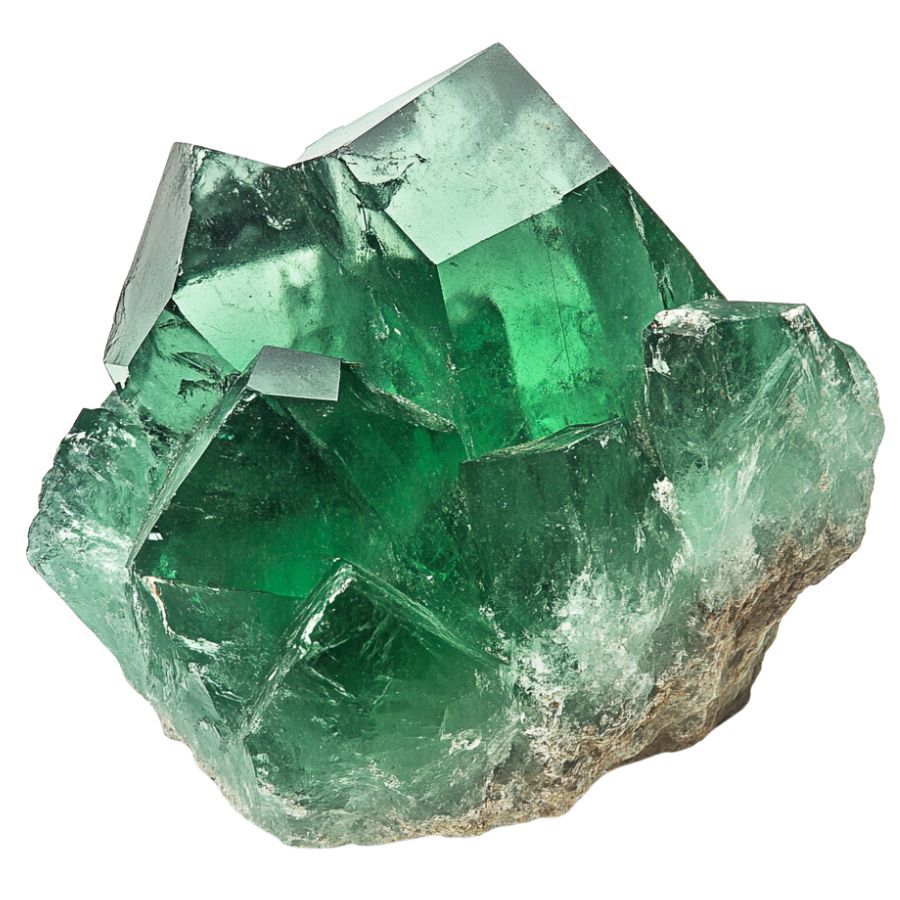
Fluorite comes in a wide range of vibrant colors, including purples, greens, blues, and yellows, and is known for forming in well-defined cubic crystals.
Beyond this, fluorite exhibits fluorescence under ultraviolet light! It can also be used in various industrial applications, including as a flux in steelmaking.
Galena
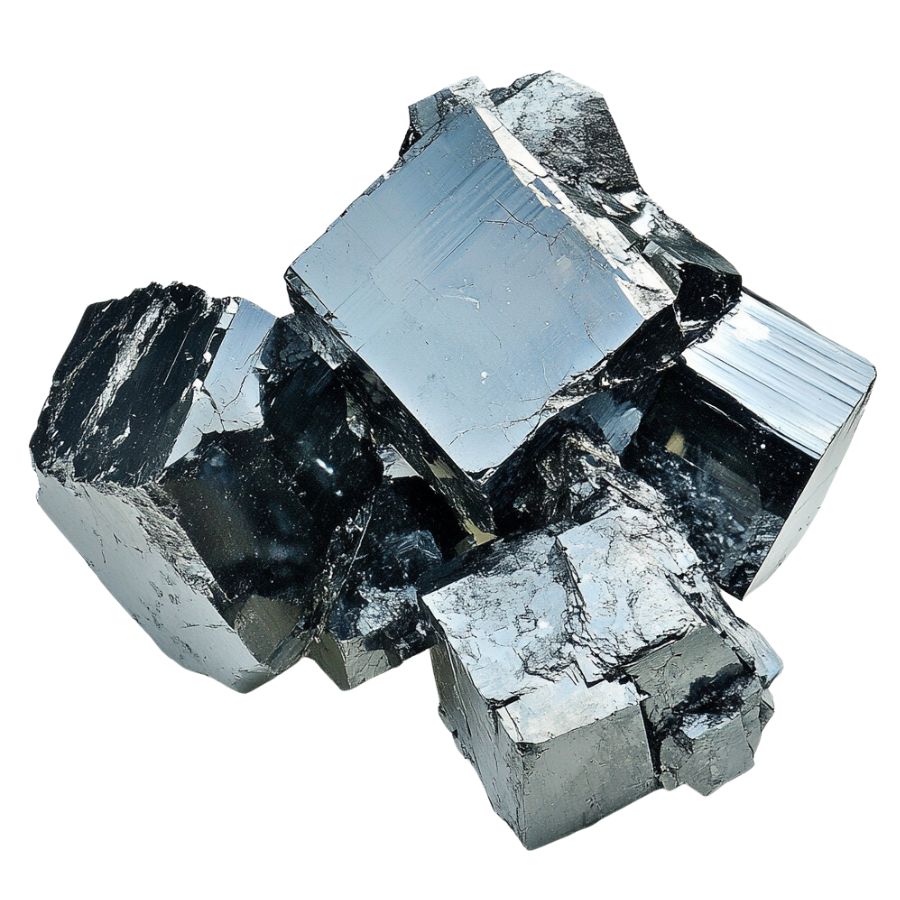
Galena distinguishes itself with a metallic luster and high density, typically found in a cube-like form. It serves as the primary ore of lead, making it important in the metal industry, while its shiny, silver color attracts collectors.
Not only does its appearance make it a subject of interest, but its weight and texture provide tangible lessons in mineral density and metallic properties. Galena also often contains traces of silver, adding to its commercial and educational value.
Corundum
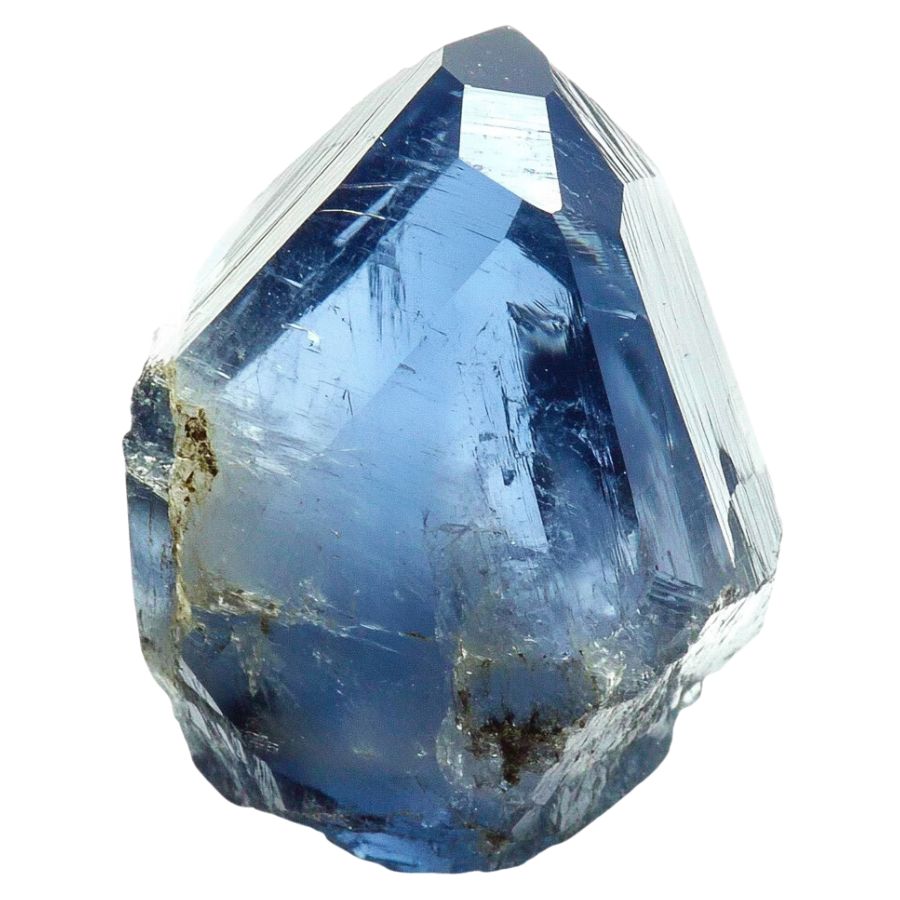
Corundum is a mineral that comes in a variety of colors, though it is typically transparent or gray. Its most famous forms are sapphires and rubies, which are prized for their vibrant blue and red hues.
The mineral is known for its remarkable hardness, ranking just below diamond on the Mohs scale. This durability makes corundum ideal for industrial abrasives and cutting tools, as well as a popular choice for fine jewelry.
Quartz
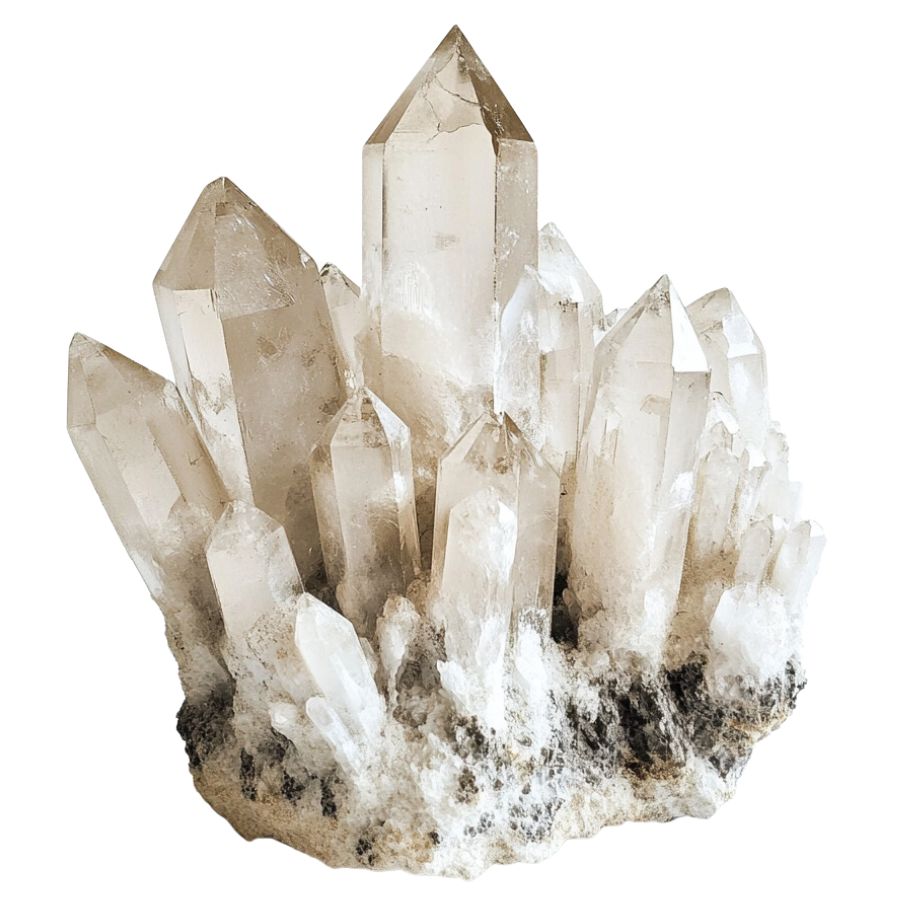
Quartz is among the most common minerals in the Earth’s crust and is prized for its durability and variety. It forms in a wide range of colors and types, from clear rock crystal to purple amethyst.
The mineral is notable for its hardness and durability, which contribute to its use in a variety of applications. Quartz is also popular in the manufacturing of electronics and watches due to its piezoelectric properties, which allow it to convert mechanical pressure into electrical energy.
Pyrite
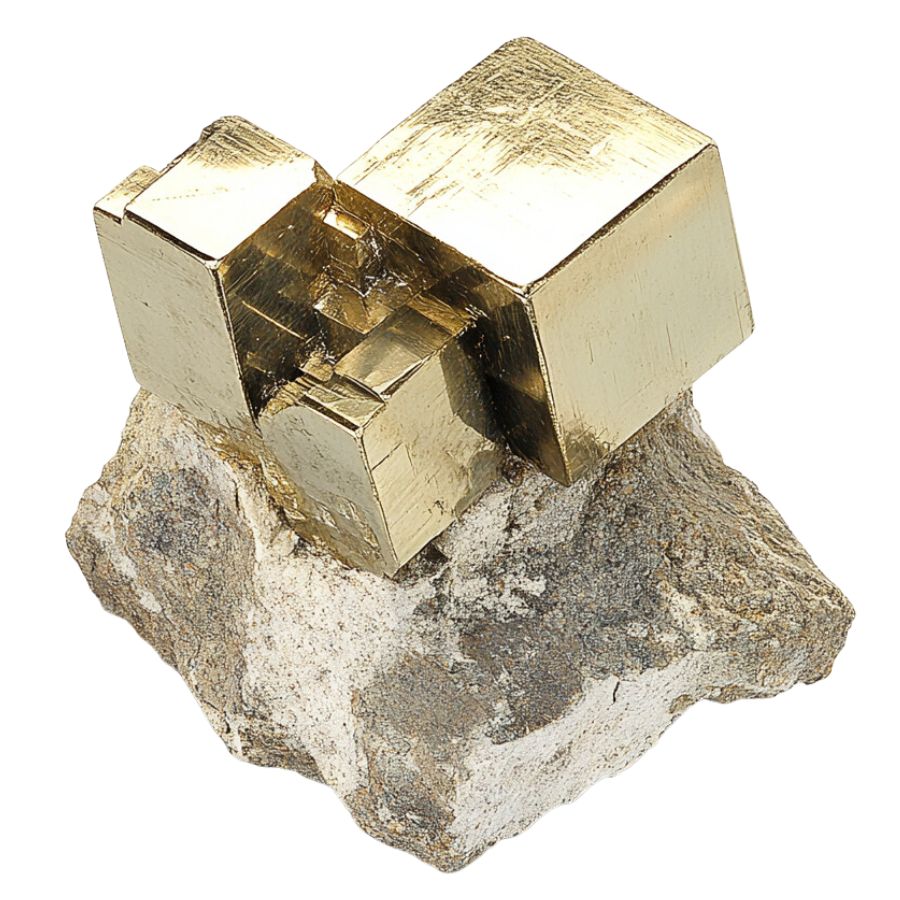
Often mistaken for gold due to its metallic luster and pale brass-yellow hue, pyrite is known colloquially as “fool’s gold.” Its characteristic cube-shaped crystal formations look man-made but are actually completely naturally formed!
Pyrite also has historical importance in producing sulfur dioxide for sulfuric acid production.
Rhodochrosite
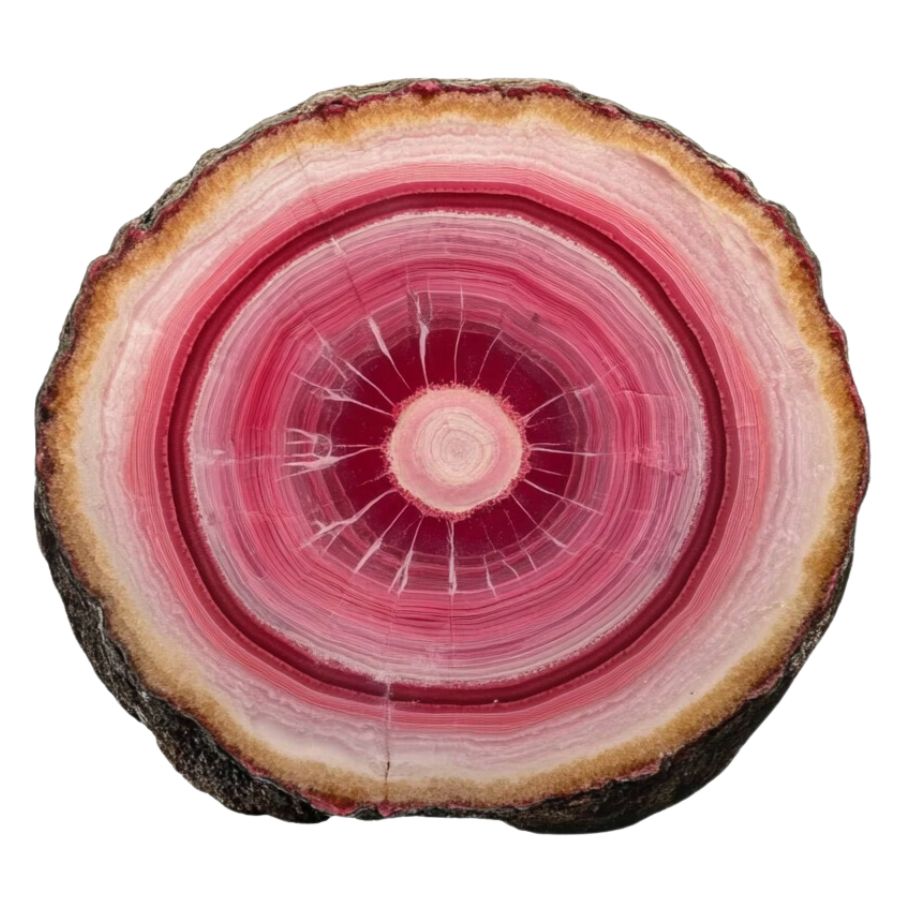
Rhodochrosite stands out with its rich pink and red hues, making it highly desirable as both a mineral specimen and a gemstone.
It typically forms in layered or stalactitic structures, with bands of colors that showcase how it grew over millions of years.
Beyond its beauty, rhodochrosite is significant as the main source of manganese, an essential element used in metal alloys.
Rhodonite
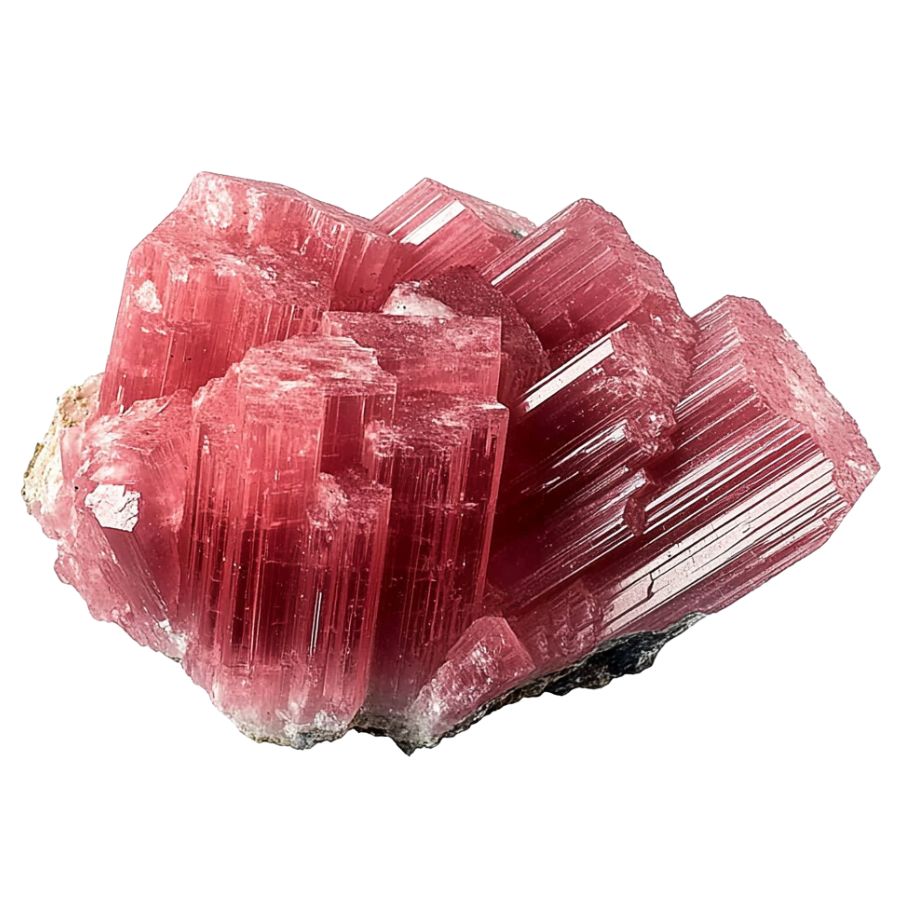
Appreciated for its deep pinks and reds, often complemented by black manganese oxide veins, rhodonite presents a dramatic appearance. It is typically found in metamorphic rocks and is used both as an ornamental stone and in jewelry.
In geology, rhodonite is significant for its role in metamorphic processes and its association with other manganese-rich minerals. It can be found in metamorphosed sedimentary rocks and is sometimes used as an indicator of the presence of manganese deposits.
Vivianite
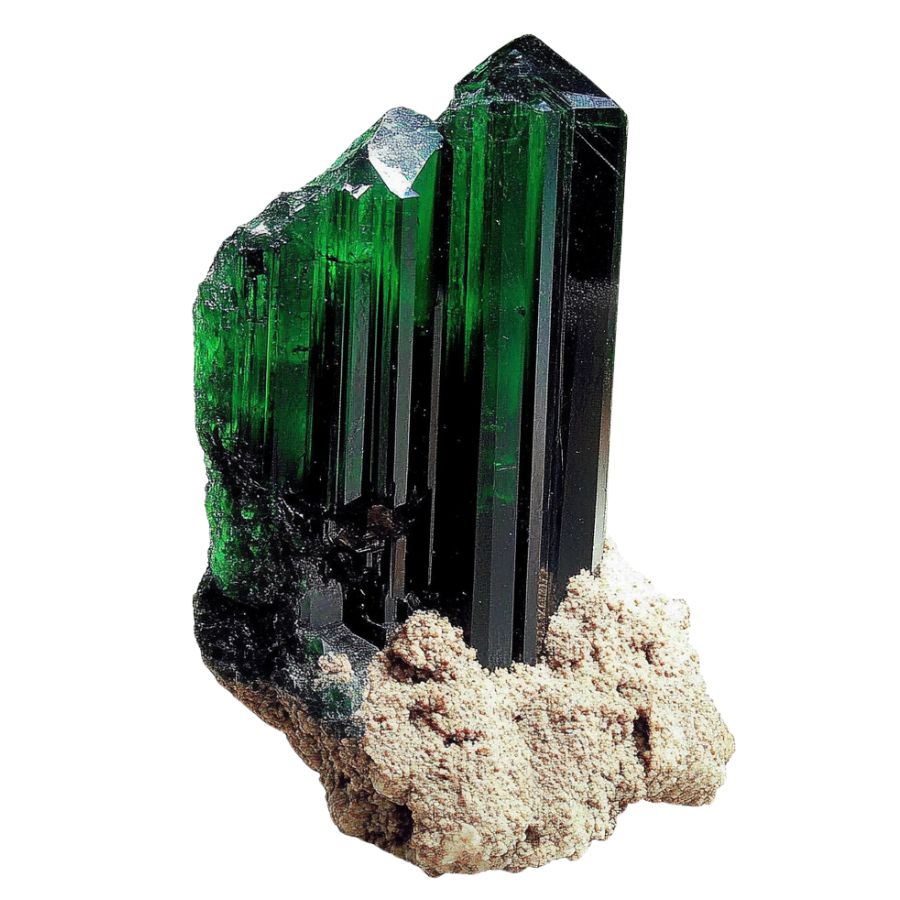
Vivianite, an iron phosphate mineral, emerges in low-oxygen environments like peat bogs or iron-rich deposits. Its striking blue to green color, which can change to a lighter shade over time due to oxidation, makes it a distinctive mineral.
Found in various geological settings, vivianite provides clues about the local conditions and the presence of phosphate deposits.
The Types of Massachusetts Crystals You Can Find

Crystals aren’t just pretty. They have unique properties that can help with emotional healing and balance energy. Plus, they can be a great addition to any home decor. Who doesn’t want to add a little sparkle and shine to their space? Now, when it comes to the types of crystals you might find, there’s a lot of variety. You’ve got the pink hues of rose quartz, the blue-green shades of fluorite, and even the deep purple of amethyst. And let’s not forget about the unique formations and shapes that some crystals come in!
Rare crystals found in Massachusetts
- Amazonite
- Chalcedony
- Emerald
- Jade
- Kyanite
- Lepidolite
- Muscovite
- Pyrite
- Quartz
- Rhodochrosite
- Rhodonite
- Tourmaline
More common crystals found here
- Agate
- Amethyst
- Beryl
- Chalcopyrite
- Fluorite
- Galena
- Garnet
- Hematite
- Jasper
- Serpentine
- Smoky Quartz
What rough crystals look like
When you’re out looking for crystals on your own it’s important to know what you’re looking for. This is what you need to look out for:
Look for exteriors like this
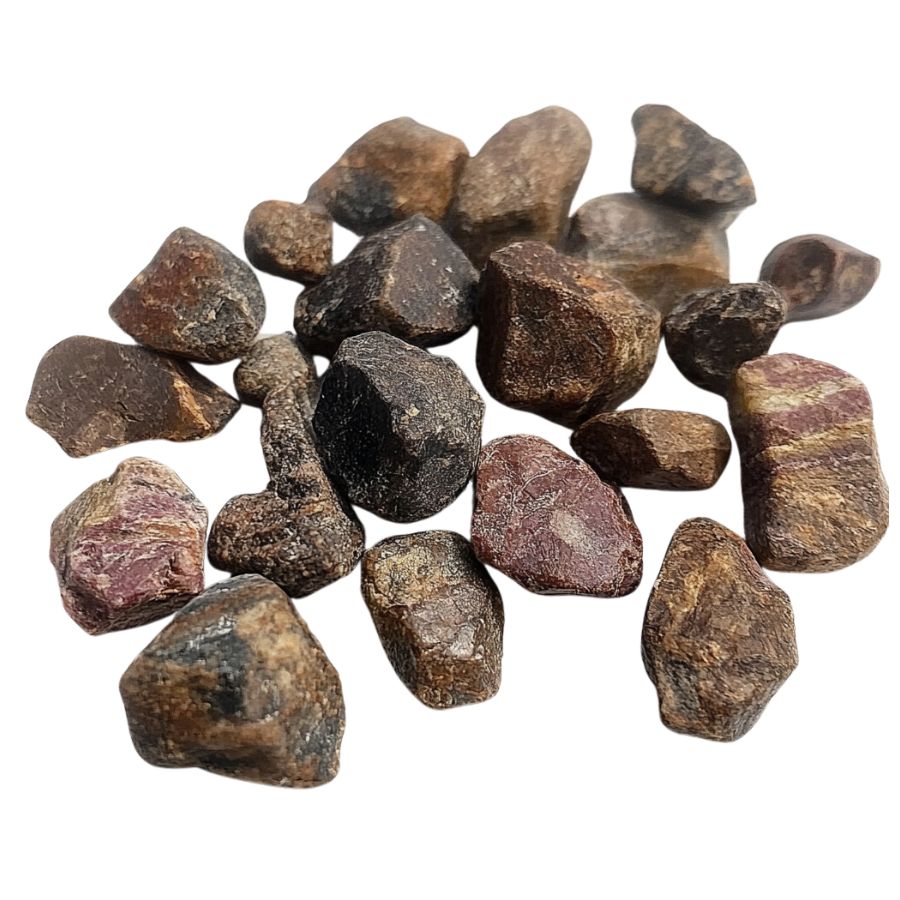
When you’re out searching for crystals in the wild, it’s essential to keep in mind that what you find won’t look like the polished stones you see in stores. One important tip is to consider what certain crystals look like in their raw, natural form.
Without the shine and smooth finish, crystals might appear rough, with jagged edges or earthy tones masking their true beauty. Understanding this can help you spot potential finds that might otherwise be overlooked.
Examine the crystal structure and shape
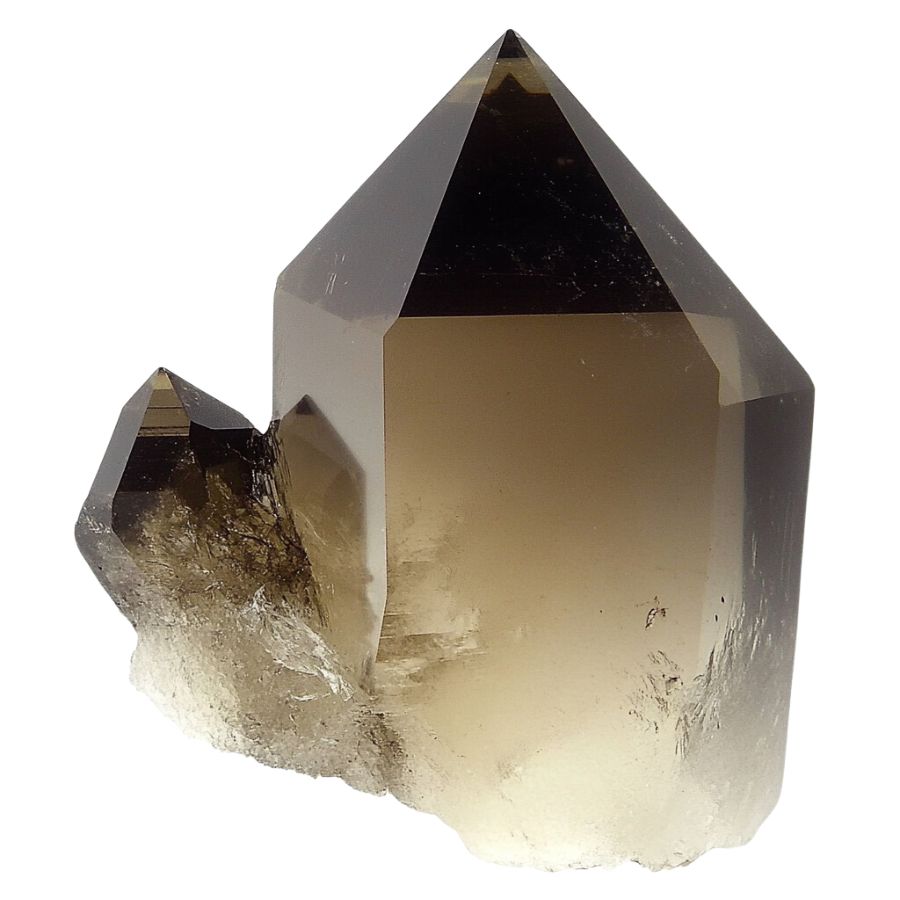
Crystals often form in specific geometric patterns that can be key to identifying them. For example, quartz is known for its hexagonal prisms, while halite typically forms cubic shapes.
By recognizing these distinct patterns, you can differentiate between various types of crystals and better understand what you’ve found.
Observe color
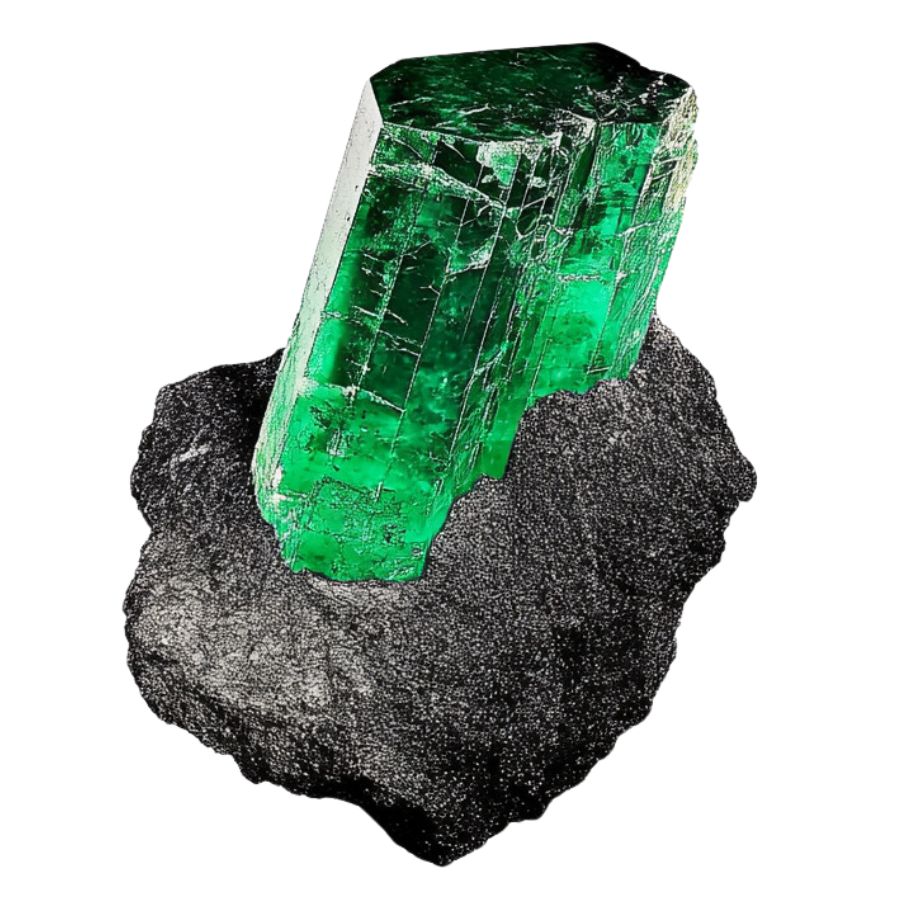
Some crystals are known for their distinct hues, like the deep purple of amethyst or the vibrant green of emerald. However, not all crystals will have strong colors; some may be clear or only slightly tinted.
Check the luster
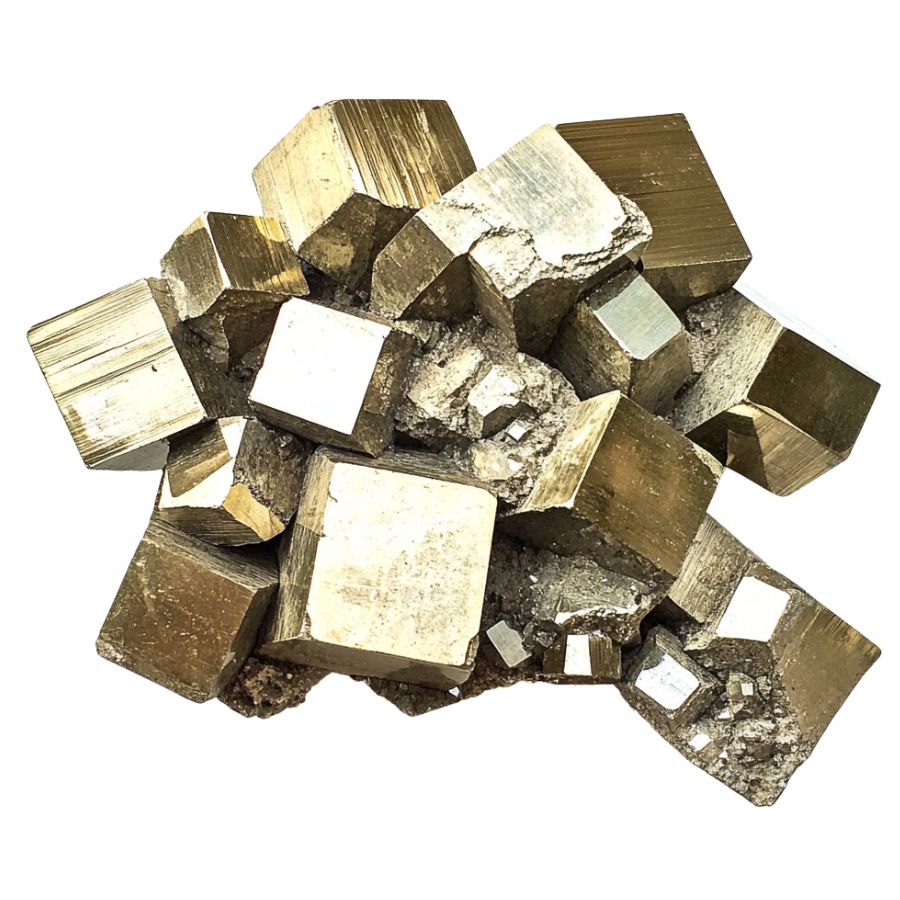
Luster refers to how a crystal’s surface interacts with light. Some crystals might have a shiny, glassy luster, while others may appear metallic or dull. This characteristic can help you determine the type of crystal you’ve found.
However, it’s important to remember that luster isn’t always obvious right away. In some cases, a crystal’s true luster will only become apparent after it’s been cleaned or polished, so keep this in mind as you examine your finds.
Evaluate the transparency
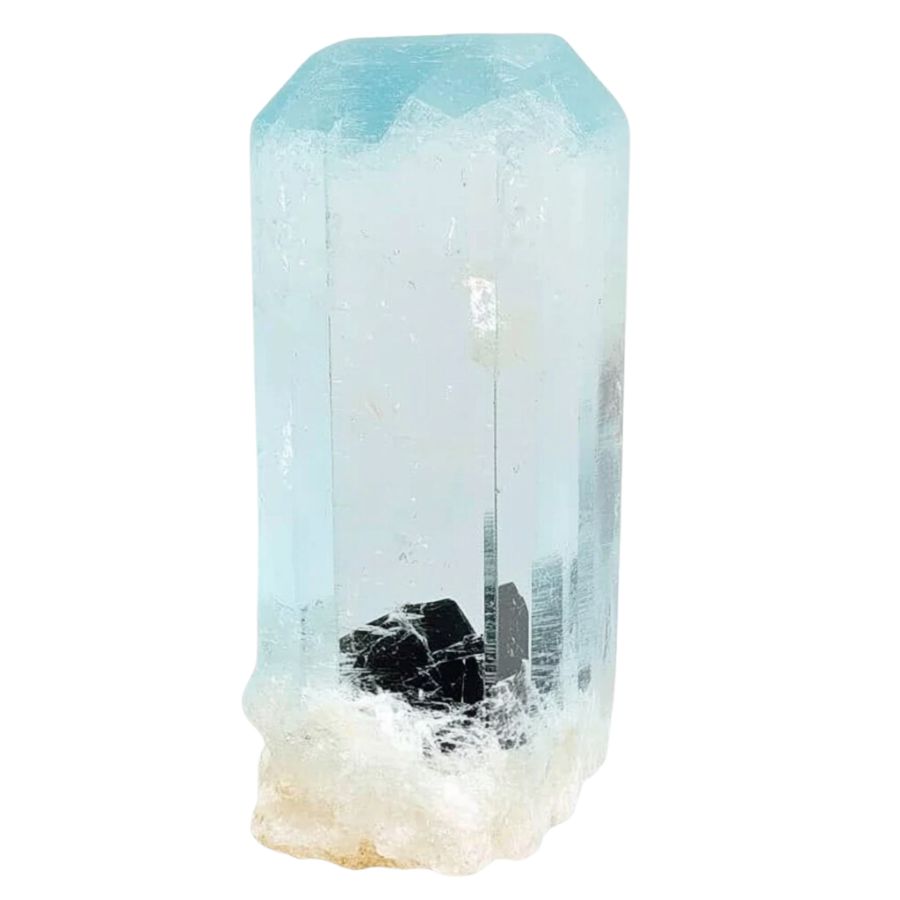
Pay close attention to how much light passes through the crystal. Some crystals are completely clear, allowing light to pass through easily, while others may be opaque and block light entirely.
You might also encounter crystals with translucent edges but opaque centers. These variations in transparency can offer valuable clues about the type of crystal you’ve found, making it easier to identify and appreciate your discovery.
A Quick Request About Collecting
Always Confirm Access and Collection Rules!
Before heading out to any of the locations on our list you need to confirm access requirements and collection rules for both public and private locations directly with the location. We haven’t personally verified every location and the access requirements and collection rules often change without notice.
Many of the locations we mention will not allow collecting but are still great places for those who love to find beautiful rocks and minerals in the wild without keeping them. We also can’t guarantee you will find anything in these locations since they are constantly changing.
Always get updated information directly from the source ahead of time to ensure responsible rockhounding. If you want even more current options it’s always a good idea to contact local rock and mineral clubs and groups
Tips on where to look
Having a better idea of where to look can greatly narrow down your search and increase your chances of finding crystals. By focusing on environments where crystals are likely to be exposed, you can spend less time searching and more time discovering.
Outcrops and Exposed Rock
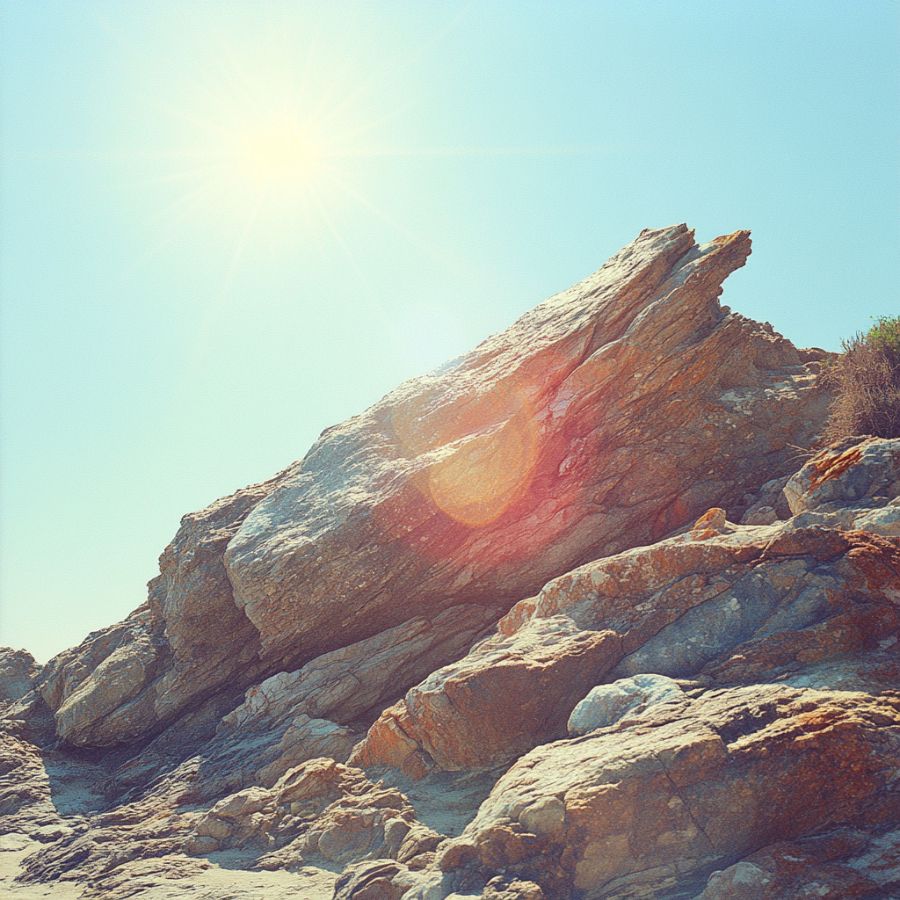
Rocky outcrops are prime locations for finding crystals and minerals. Search along the edges of outcrops, particularly where erosion has worn away the surrounding soil, revealing the rock underneath.
Pay close attention to any visible cracks, crevices, or small cavities within the outcrop, as these are often where crystals develop and can be extracted with minimal effort.
Stream Beds and Gravel Deposits
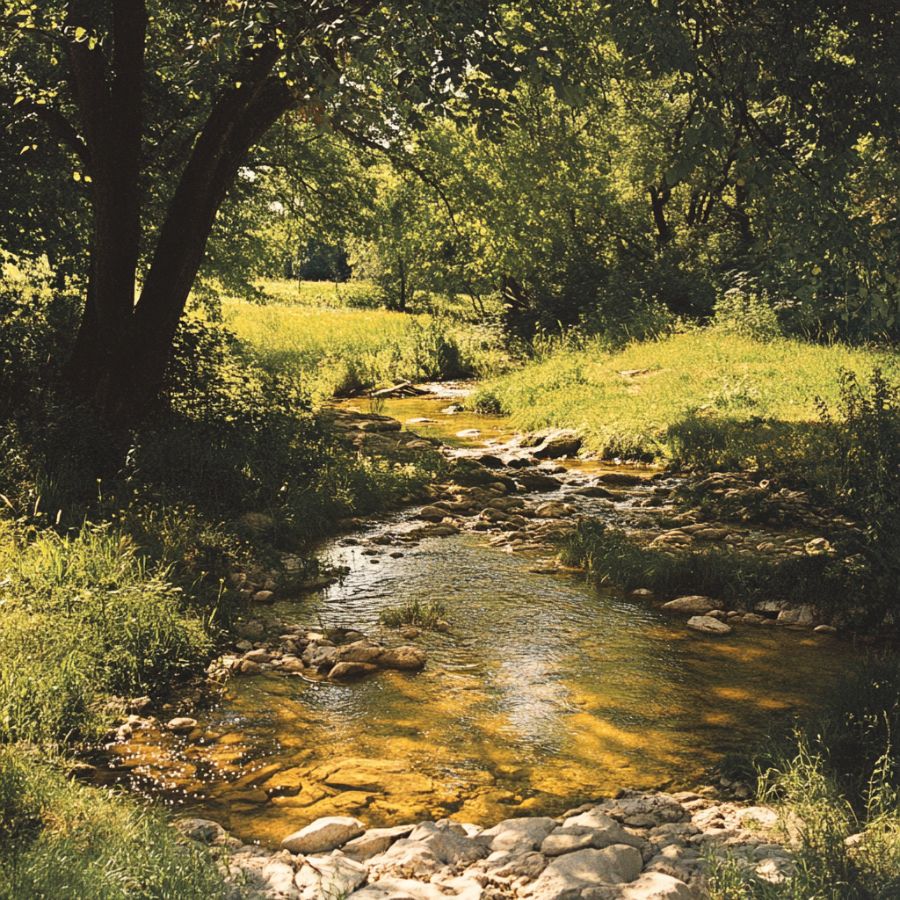
Stream beds are dynamic environments where water flow constantly shapes the landscape. Over time, water can erode rocks upstream, breaking them down and carrying mineral fragments, including crystals, downstream.
When searching in these areas, look for spots where the current has slowed, such as bends in the stream or areas behind large rocks, as these are prime locations for deposits.
Quarries and Mines
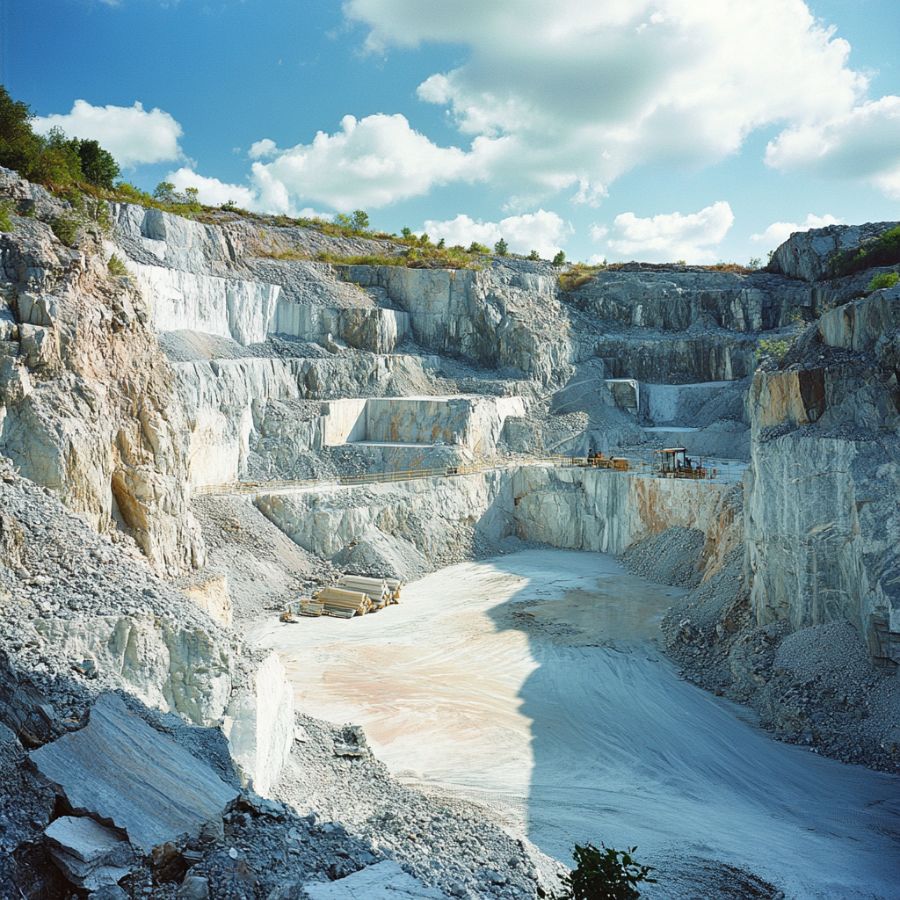
Quarries and mines are excellent places to search for crystals because they expose deep layers of rock that would otherwise be hidden beneath the surface. These sites often contain a variety of minerals and crystals that have been brought to the surface during excavation.
Pay attention to tailings piles, where waste rock is discarded, as they often contain overlooked or broken crystals. Always prioritize safety when exploring these areas and ensure that you have permission to search.
Road Cuts and Construction Sites
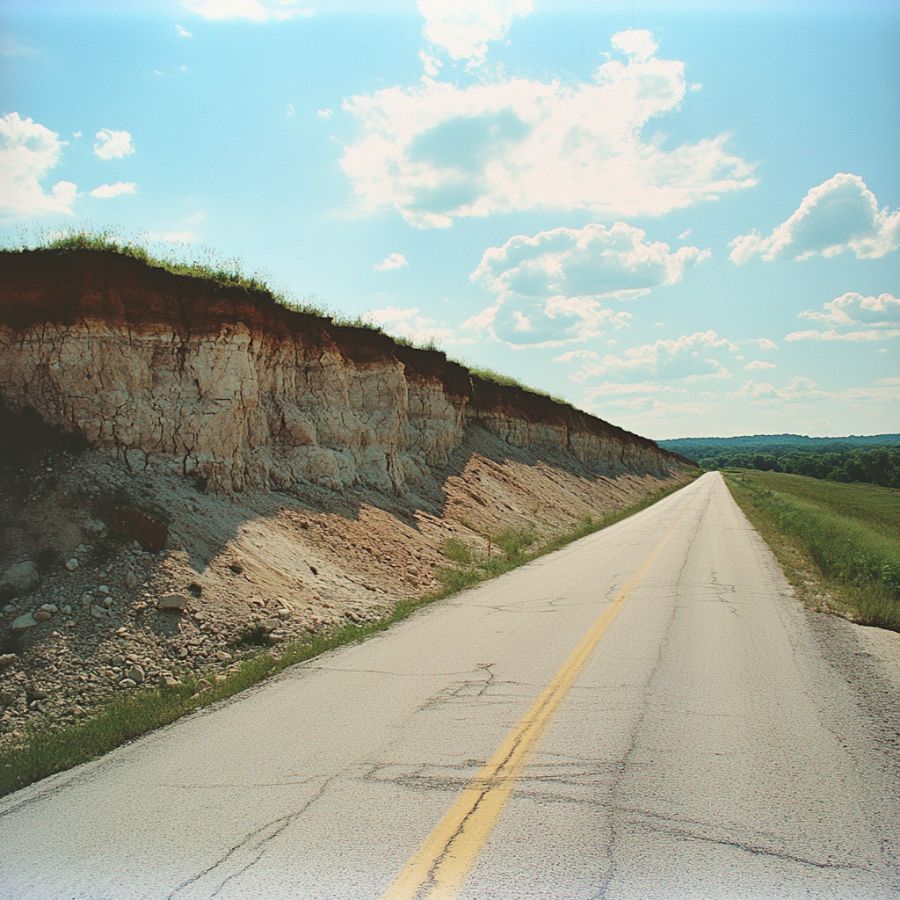
As roads are cut through hillsides or construction projects dig deep foundations, layers of rock and soil that have been undisturbed for millions of years are suddenly exposed.
Look for freshly exposed rock faces, especially where blasting has occurred, as this can create fissures or expose pockets filled with crystals. Be cautious around active construction sites, and always seek permission before exploring.
Mountainous Areas

In mountainous regions, erosion caused by wind, rain, and ice can wear away the softer rock, exposing harder crystals that have formed within. Focus on weathered and broken rock formations.
Look for scree slopes, where loose rock has accumulated at the base of cliffs. Additionally, areas near fault lines or volcanic vents are particularly promising, as they often have a higher concentration of minerals.
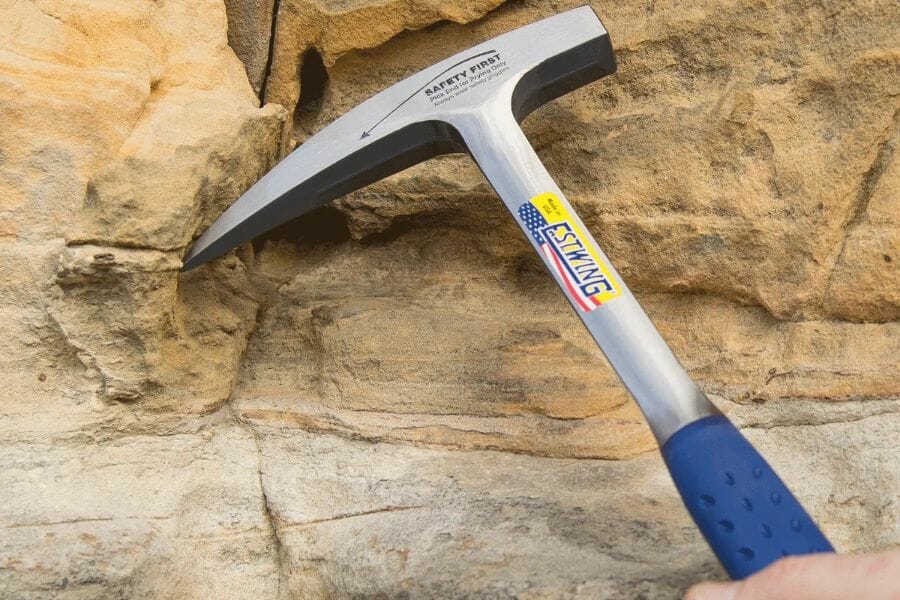
The tools every crystal hunter will need
When you're out looking for crystals having the right tools for the job is very important. You don't need a lot for most trips but there are a handful that are critical and will make your life a lot easier.
We get asked a lot about the equipment we use. Over the years we've found a handful of tools that we recommend to both new and experienced crystal miners which we outline in great detail in our complete rockhounding equipment guide. These are quality options that also happen to be relatively inexpensive.
Below are the basic tools that make your life so much easier and save you a ton of time. Check out the full guide to see everything we recommend bringing. One quick note, as an Amazon Associate I earn from qualifying purchases but we try very hard to only recommend gear we would use ourselves and often recommend brands you can't find on Amazon.
At a minimum you should have:
1 - Sturdy rock hammer: The Estwing Rock Pick is our standard
2 - Rugged chisels: Try Kendo' 3-piece Chisel Set
3 - Compact shovel: The Koleiya 28-inch shovel works well
4 - Rock screen pan: The Wazakura Soil Sieve Set fits the bill
5 - Eye protection: DeWalt Safety Glasses are cheap and comfortable
6 - Head protection: Malta's Safety Helmet has been our go-to
7 - Jewelers lens with at least 20x magnification: Jarlink's Jewelers Loop is perfect
The crystal-finding books that we use most
There are also a few books that have been extremely helpful in the search for gems. These books have great recommendations and tips:
National Audubon Society Field Guide to Rocks and Minerals: North America
Southeast Treasure Hunter's Gem & Mineral Guide
Earth Treasures: The Southeastern Quadrant
We provide links to find these tools on Amazon but some can also be found at your local hardware stores. For more recommendations check out the link to our full tool guide above.
Massachusetts Crystal Mining Laws And Regulations
Crystal hunting is a popular recreational activity in Massachusetts, and the state has established regulations to ensure hunters’ safety and preserve natural resources. Crystal hunting on private property requires permission from the landowner.
A permit from the Massachusetts Department of Conservation and Recreation may be required on public lands, including state parks and forests.
Hand tools, such as shovels, picks, and hammers, are allowed for recreational crystal mining. However, the use of heavy equipment or explosives is strictly prohibited.
The Best Locations For Crystal Mining in Massachusetts
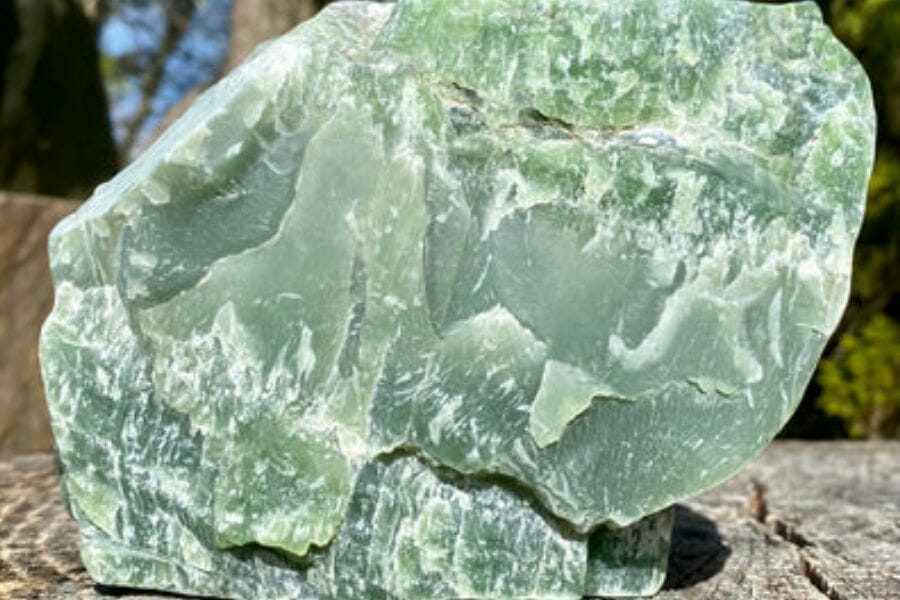
Here are our best picks for crystal hunting areas in Massachusetts. We’ve had a lot of success exploring them and discovering unique crystals, and we do not doubt you’ll have just as much success!
Always Confirm Access and Collection Rules!
Before heading out to any of the locations on our list you need to confirm access requirements and collection rules for both public and private locations directly with the location. We haven’t personally verified every location and the access requirements and collection rules often change without notice.
Many of the locations we mention will not allow collecting but are still great places for those who love to find beautiful rocks and minerals in the wild without keeping them. We also can’t guarantee you will find anything in these locations since they are constantly changing.
Always get updated information directly from the source ahead of time to ensure responsible rockhounding. If you want even more current options it’s always a good idea to contact local rock and mineral clubs and groups
Beryl Hill Mine Is Our Favorite Crystal Mine in Massachusetts
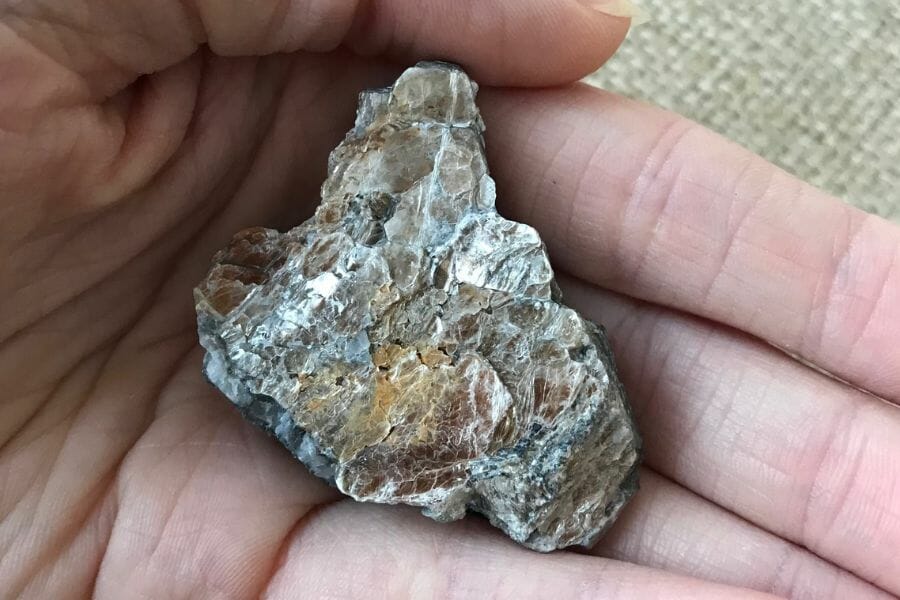
Royalston, Worcester County
If you’re looking for a prime spot to find some stunning crystals in Massachusetts, you should check out the Beryl Hill Mine. The mine was first discovered in the late 1800s and reopened in the 1950s. This location can be added to your list of places to find gems in Massachusetts.
The mine sits on a pegmatite deposit, which means it’s rich in minerals that can form into large crystals. You might find beryl (hence the name) and other gems like quartz and tourmaline. The area is also surrounded by lush forests and rolling hills, making for some beautiful scenery while searching for rocks.
It’s not as well-known as some other locations in the state, so you might have better luck finding some treasures. The area is fairly accessible, with some easy trails leading up to the mine site.
Where we found crystals at Beryl Hill Mine
We have collected various crystals, such as beryl, muscovite, and smoky quartz in the whole area of Beryl Hill Mine.

The tools every crystal hunter will need
When you're out looking for crystals having the right tools for the job is very important. You don't need a lot for most trips but there are a handful that are critical and will make your life a lot easier.
We get asked a lot about the equipment we use. Over the years we've found a handful of tools that we recommend to both new and experienced crystal miners which we outline in great detail in our complete rockhounding supplies guide. These are quality options that also happen to be relatively inexpensive.
Below are the basic tools that make your life so much easier and save you a ton of time. Check out the full guide to see everything we recommend bringing. One quick note, as an Amazon Associate I earn from qualifying purchases but we try very hard to only recommend gear we would use ourselves and often recommend brands you can't find on Amazon.
At a minimum you should have:
1 - Sturdy rock hammer: The Estwing Rock Pick is our standard
2 - Rugged chisels: Try Kendo' 3-piece Chisel Set
3 - Compact shovel: The Koleiya 28-inch shovel works well
4 - Rock screen pan: The Wazakura Soil Sieve Set fits the bill
5 - Eye protection: DeWalt Safety Glasses are cheap and comfortable
6 - Head protection: Malta's Safety Helmet has been our go-to
7 - Jewelers lens with at least 20x magnification: Jarlink's Jewelers Loop is perfect
The crystal-finding books that we use most
There are also a few books that have been extremely helpful in the search for gems. These books have great recommendations and tips:
National Audubon Society Field Guide to Rocks and Minerals: North America
Northeast Treasure Hunter's Gem & Mineral Guide
Earth Treasures: The Northeastern Quadrant
We provide links to find these tools on Amazon but some can also be found at your local hardware stores. For more recommendations check out the link to our full tool guide above.
Barrus Farm
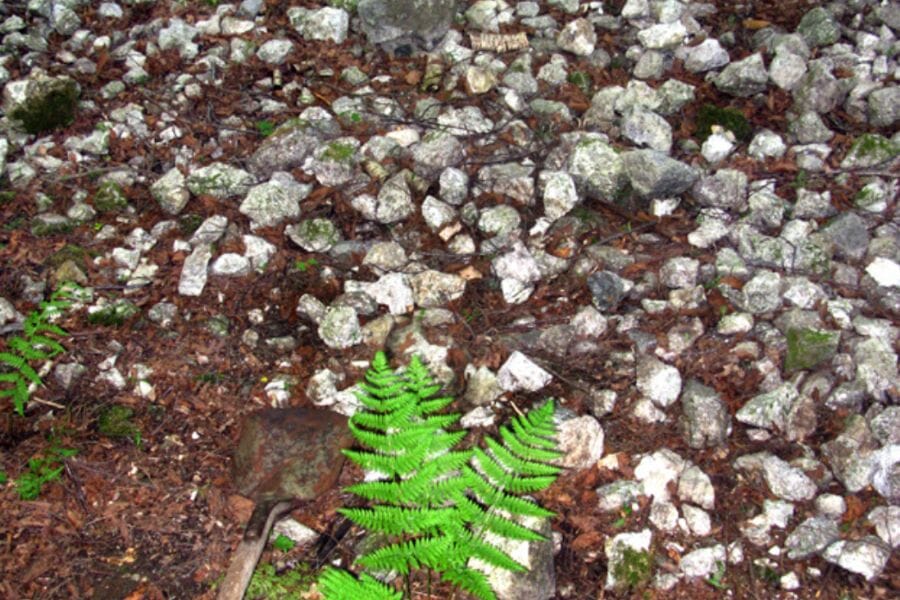
Goshen, Hampshire County
The Barrus Farm is located in Goshen, and it’s been a popular spot for crystal hunting since the 1800s. The area is known for its pegmatite deposits, which are basically big veins of minerals that can form into some incredible gemstones.
But what makes this place so special? Well, the geology is pretty unique. The pegmatite at Barrus Farm contains various crystals, and if you’re lucky, you might even come across some rare finds like tourmaline or lepidolite.
But it’s not just the geology that makes this place worth a visit. The area is surrounded by rolling hills and lush forests, making for some beautiful scenery while searching for rocks. In addition, the trails leading up to the mine site are fairly easy to navigate, so it’s a great spot for beginner and experienced crystal hunters.
Where we found crystals at Barrus Farm
There are apatite, calcite, muscovite, pyrite, and tourmaline crystals found south of the shore, in the roadcuts through the pegmatites of Brant Lake. We’ve created a thorough guide so you can determine how much do crystals cost.
Davis Mine
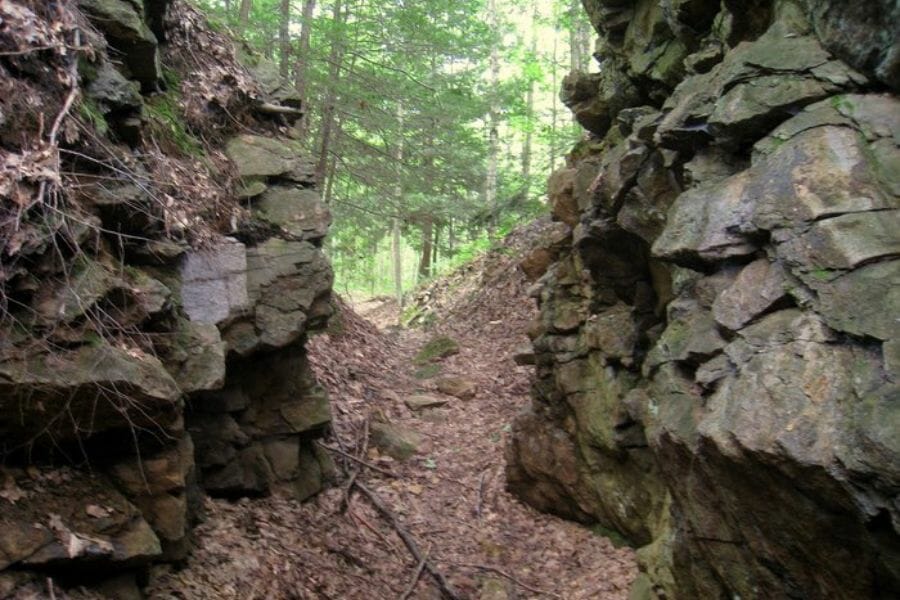
Rowe, MA 01367, United States
The Davis Mine is located in the town of Rowe, and it was first discovered in the 1800s. It’s been a popular spot for rock hounds ever since, and for a good reason. The mine is fairly accessible. A hiking trail leads up to the mine site, so you don’t need any special equipment to get there.
If you’re ready for an adventure and want to uncover some amazing crystals, the Davis Mine should definitely be on your list. You never know what kind of gems you might find hiding in those pegmatite veins!
Where we found crystals at Davis Mine
Chalcopyrite and pyrite crystals are primarily found at the Davis Mine.
Deerfield River
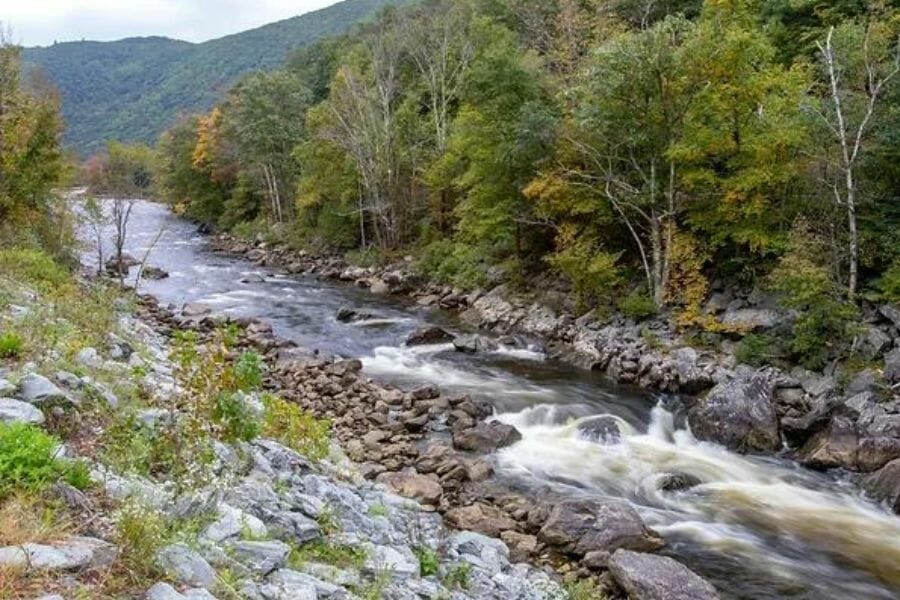
291 Campsite Rd, Newcomb, NY 12852
If you’re looking for a scenic spot to hunt for crystals in Massachusetts, the Deerfield River might be the place for you. This stunning waterway has a rich history, unique geology, and the potential for finding gorgeous gems.
The Deerfield River is located in Western Massachusetts, and it’s been a favorite spot for rock hounds for years. The river cuts through various rock formations, which can be great for finding different types of crystals.
Where we found crystals at the Deerfield River
The area gravels, quarries, basalt sills, and gravel beds of the Deerfield River are abundant in agate, chalcedony, fluorite, and jasper crystals.
Forge Hill
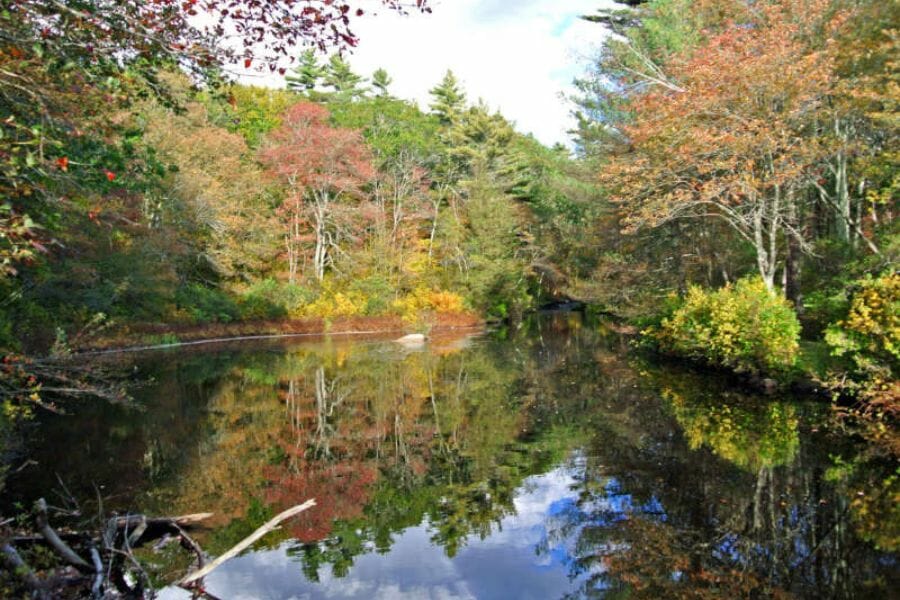
Franklin, MA 02038
Forge Hill is a prominent geological formation in Franklin. It is a popular destination for geologists and mineral enthusiasts due to the area’s abundance of crystals and mineral deposits. The hill is part of the larger Wrentham-Franklin-Oxford area, renowned for its diverse geology and mineralogical diversity.
The history of Forge Hill dates back to the early 18th century, when it was used as a site for iron mining and processing. The area was a major source of iron ore, and several forges were established in the region to produce iron products. Over time, the mining operations declined, and the hill became a popular destination for hikers and nature enthusiasts.
Forge Hill is an excellent destination to explore if you want to find crystals. Its diverse geological formations and mineral deposits offer a treasure trove of crystals and gems waiting to be discovered. You can hike along the numerous trails and explore the various outcrops and rock formations to find these precious stones.
Our guides provide step-by-step instructions and detailed descriptions to help you distinguish the most commonly confused crystals, making it a breeze to recognize each one:
Where we found crystals at Forge Hill
We had the best luck locating different types of crystals, like garnet, quartz, rhodochrosite, and rhodonite, at Forge Hill.
Our Other Favorite Places For Crystal Hunting
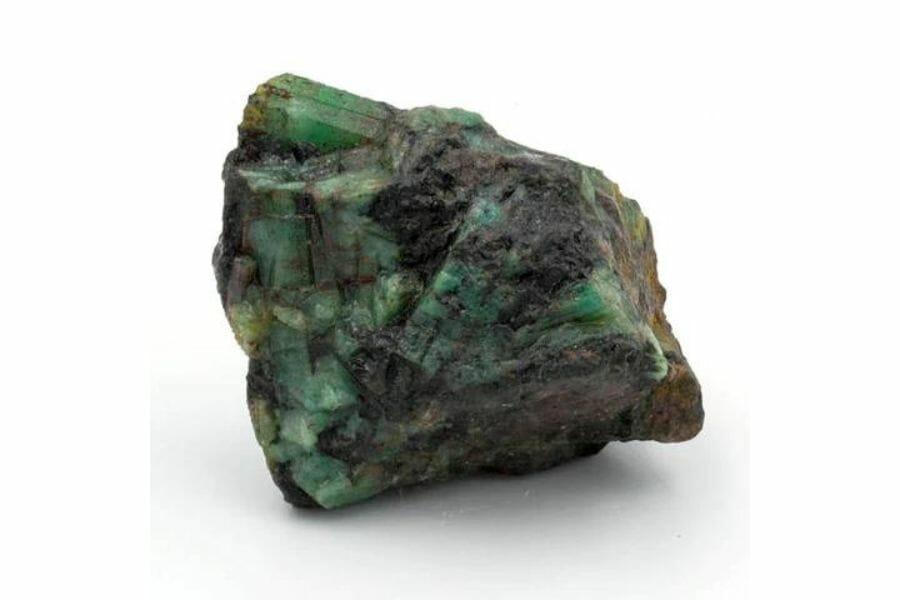
It’s not surprising that the state offers a ton of incredible locations to find crystals, as well as to dig for geodes in Massachusetts. We’ve included a list of additional choices that are interesting to consider:
Where you can find crystals for free in Massachusetts
Starting off, let’s talk about a few places where you can look for free. Certain destinations are still free to visit, despite the fact that many of the most magnificent places have entrance fees.
| County | Location |
| Barnstable | Pebbles on the beach between Sandwich and Plymouth County bounder for jasper |
| Essex | Cape Ann Granite Quarry and Pomeroy Quarry for amazonite and smoky quartz |
| Essex | Monument Mountain for smoky quartz |
| Franklin | Cheapside Quarry for amethyst |
| Franklin | Area quarries and area exposures of Northfield Mountain for beryl, fluorite, and garnet |
| Hampden | Lane Quarry and Atwater Quarry for amethyst and serpentine |
| Hampshire | Lane Trap Quarry for agate and amethyst |
| Hampshire | Old Searle Farm for rhodonite and kyanite |
| Northfolk | Shores of Massachusetts Bay for jasper |
| Worcester | Rollstone Hill pegmatite for beryl |
Don’t let the similarities of crystals fool you! Our guides are designed to help you confidently identify and differentiate between commonly confused crystals, ensuring you never mistake one for another again:
Other great places to dig for crystals
You can search for crystals at other sites if you wish to spend money. Seasonal variations will affect the cost; occasionally, it might be free. Before visiting these places, you should contact them first.
| County | Location |
| Essex | Newburyport area lead mines for chalcopyrite, galena, pyrite, and serpentine |
| Franklin | Bernardston area mines for hematite |
| Franklin | Greenfield, Leverett, and Montague area mines for chalcopyrite and hematite |
| Franklin | Warwick area mines for hematite |
| Hampden | Montgomery area mines for galena |
| Hampshire | West Springfield area mines for chalcopyrite, fluorite, and galena |
The Best Crystal Shops In Massachusetts
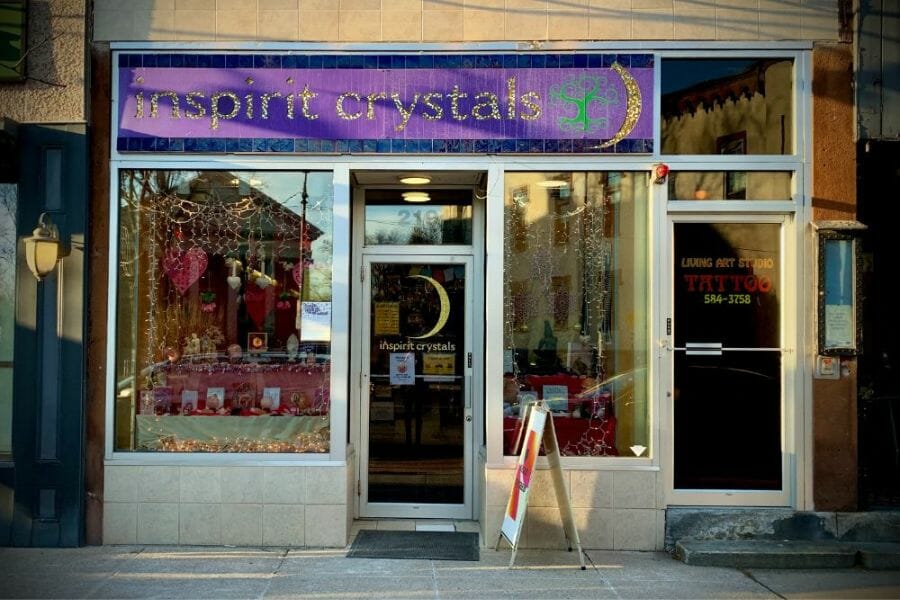
Many of us enjoy making little purchases to complete our collections because the state offers various crystals dispersed throughout such a huge area. These are the top crystal shops we’ve located if you want distinctive and beautiful specimens.
- Cape Cod Crystals – 55 Jonathan Bourne Dr Unit 1, Pocasset, MA 02559, United States
- Cast a Stone – 700 Brockton Ave, Abington, MA 02351, United States
- A Crystal Mine – 276 Turnpike Rd, Westborough, MA 01581, United States
- Easthampton Crystal and Mineral – 92 Cottage St, Easthampton, MA 01027, United States
- Inspirit Crystals – 219 Main St, Northampton, MA 01060, United States
- Midnight Odyssey Crystals – 1655 Boston Rd, Springfield, MA 01129, United States
- Portal Crystal Gallery – 489 Massachusetts Ave, Arlington, MA 02476, United States
- The Serendipity Place – 9 Vernon St, Framingham, MA 01701, United States
- White Mountain Crystals – 1 Man-Mar Dr Unit #9, Plainville, MA 02762, United States
- Zuzu’s Healing Arts – Mills 58, 58 Pulaski St Building C 3rd Floor, Peabody, MA 01960, United States
Additional places to find crystals in nearby states
If you’ve already tried all of our recommendations above or are planning a trip out of the state, you should check out our guides for neighboring states:
- Crystals in Connecticut
- Crystals in New Hampshire
- Crystals in New York
- Crystals in Rhode Island
- Crystals in Vermont
If you have any recommendations we haven’t covered please leave them in the comments below!

